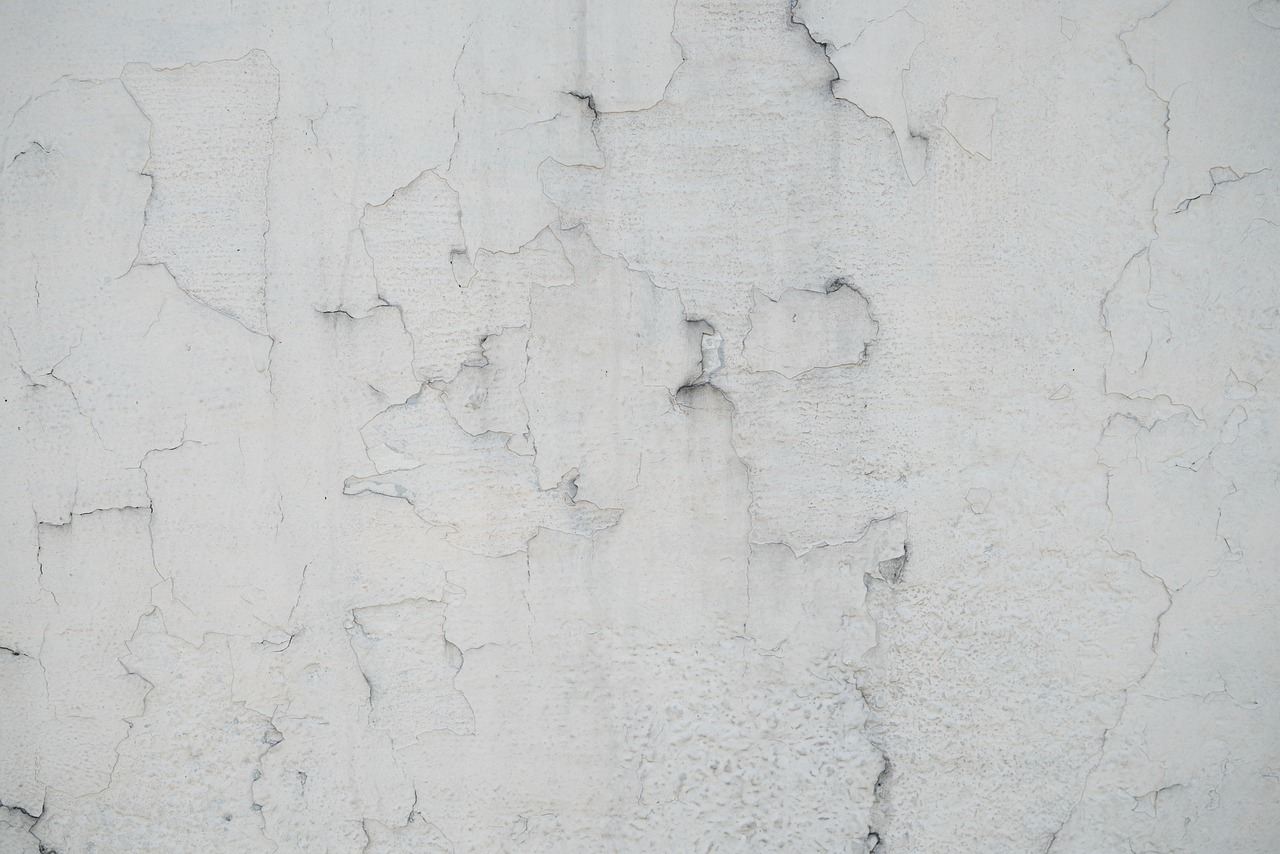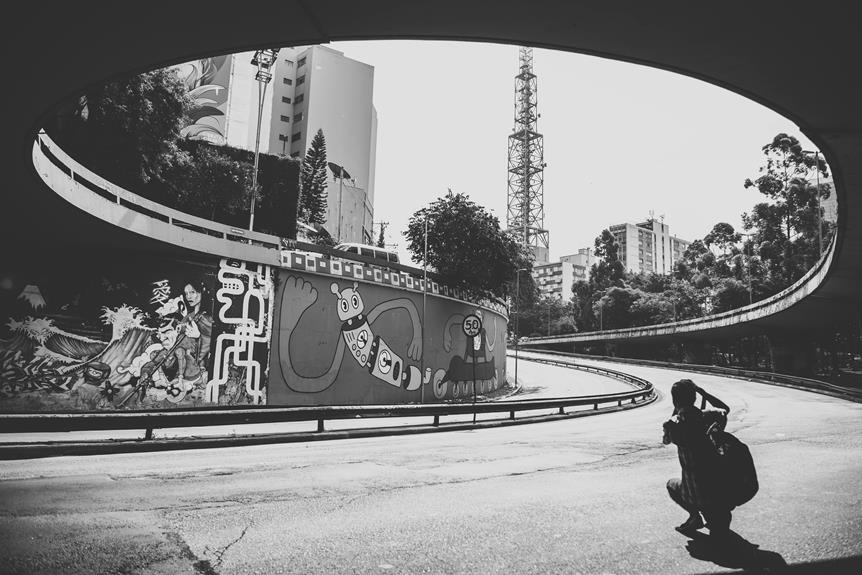Graffiti wall art merges historical roots with modern creativity, transforming stark urban spaces into vibrant canvases. You'll find its impact in ancient civilizations and the rebellious streets of the 1960s. Techniques vary from stencil art to freehand styles, showcasing individuality and pushing artistic boundaries. Renowned artists like Banksy and Jean-Michel Basquiat critique societal norms and celebrate cultural identity. Graffiti doesn't just adorn walls; it challenges authority and amplifies marginalized voices. When incorporated into home décor, it adds an edgy, urban feel, turning mundane rooms into conversation starters. Understanding these facets can deepen your appreciation for this compelling art form.
Key Points
- Graffiti wall art transforms spaces with bold, urban sophistication.
- Canvas prints inspired by graffiti artists add social commentary and visual interest.
- Graffiti murals can serve as striking focal points in any room.
- Smaller graffiti pieces provide edgy, urban accents to decor.
- Incorporating graffiti art fosters a dynamic and culturally rich ambiance.
History of Graffiti Art
The history of graffiti art spans millennia, beginning with ancient civilizations like the Romans and Greeks who inscribed messages and images on walls.
Fast forward to the 1960s, and you'll see graffiti reemerging as a vibrant form of urban expression.
Early pioneers like Cornbread and Taki 183 in the 1970s set the stage for graffiti's evolution into a recognized art form.
The 1980s brought mainstream attention with artists such as Keith Haring and Jean-Michel Basquiat, whose work transcended the streets.
Today, graffiti art continues to thrive and innovate, with contemporary figures like Banksy gaining international acclaim for their provocative pieces.
This enduring legacy underscores graffiti's role as both a cultural artifact and a dynamic artistic medium.
Techniques and Styles
Exploring the techniques and styles of graffiti wall art reveals a rich tapestry of creative innovation and cultural significance. You'll find that techniques like stencil art, freehand painting, wheatpaste, and sticker art each bring their own flair. Traditional lettering and tagging coexist with intricate murals and street art installations. Styles like 3D graffiti, wildstyle, and bubble letters highlight the diversity and ingenuity within this art form.
Graffiti artists often mix spray paint, markers, and various tools to achieve their vibrant works. As styles and techniques evolve, they continually push boundaries and challenge conventional notions of what art can be. This dynamic landscape celebrates both individual expression and the broader cultural dialogue it fosters.
Famous Graffiti Artists
Among the myriad techniques and styles of graffiti wall art, certain artists have risen to prominence, each leaving an indelible mark on the cultural landscape. Their unique approaches and profound messages have elevated graffiti from mere vandalism to celebrated art.
Consider these notable figures:
- Banksy: His anonymous yet provocative work challenges social and political norms, making powerful statements through simple imagery.
- Jean-Michel Basquiat: Shifting from street graffiti to gallery walls, Basquiat's art often critiques societal issues and explores cultural identity.
- Lady Pink: As a pioneering female artist in the 1980s, she brought vibrancy and dynamic storytelling to the streets, breaking gender barriers in the graffiti world.
These artists exemplify how graffiti can transcend traditional boundaries and influence contemporary art.
Cultural Impact
Graffiti wall art disrupts conventional aesthetics and compels society to confront underlying social and political issues. By challenging traditional art forms, graffiti provides a canvas for marginalized voices, allowing them to be heard in urban landscapes.
It's a bold form of resistance against authority, highlighting the power of creativity in unconventional spaces. This art form showcases the diversity of urban culture and transforms public spaces into vibrant forums for dialogue.
Graffiti's evolution has profoundly influenced contemporary art movements, inspiring new generations to explore unique mediums and themes. As you walk through a city, the vivid imagery and messages in graffiti mirror the cultural pulse of the community, making it an indispensable part of urban identity.
Graffiti in Modern Decor
The cultural resonance of graffiti wall art naturally extends into modern decor, where its dynamic and bold aesthetic transforms living spaces with a touch of urban sophistication. Incorporating graffiti into your home can create an edgy vibe, making ordinary rooms feel extraordinary. It serves as both a statement piece and a subtle accent, depending on your preference.
Consider these three ways to integrate graffiti into your decor:
- Canvas Prints: Banksy-inspired canvases offer a mix of social commentary and artistry, adding depth to your space.
- Statement Walls: A graffiti mural can become the focal point of a room, sparking conversation and interest.
- Accent Elements: Smaller graffiti pieces can add an urban touch without overwhelming the room.
Evaluate your space and choose the option that best aligns with your style.
Caring for Graffiti Art
To guarantee your graffiti wall art retains its vibrant allure, regularly dusting and gentle cleaning are essential maintenance steps. Use a damp cloth to carefully remove any stains, ensuring you don't damage the artwork. Harsh chemicals or cleaning sprays can erode the paint, so it's best to avoid them entirely.
Additionally, place your graffiti canvas away from direct sunlight and high humidity areas, as these conditions can cause fading and deterioration over time. Graffiti art is inherently durable, but these steps will help maximize its lifespan and keep it looking fresh.
Frequently Asked Questions
Is It Legal to Graffiti on a Wall?
No, it's not legal to graffiti on a wall without permission. Unauthorized graffiti can lead to fines or criminal charges. However, some cities have legal graffiti walls where you can showcase your art without breaking the law.
Why Is Graffiti Art Illegal?
Graffiti art is illegal because it violates property rights and disrupts public aesthetics. You might see it as self-expression, but unauthorized acts lead cities to spend millions on removal, enforcing stricter laws and penalties.
What Is the Graffiti Wall Method?
You're using the graffiti wall method when you create art on walls or canvases with spray paint, markers, or other mediums. This technique combines stencils and freehand, blurring lines between vandalism and artistic expression.
How Long Does Graffiti Last on Walls?
You'll find that graffiti's lifespan varies widely. Factors like weather, location, and surface, along with local regulations and community attitudes, all play a role. High-quality techniques can make graffiti endure, sometimes turning it into urban landmarks.
Conclusion
You've now explored the rich history, diverse techniques, and profound cultural impact of graffiti wall art. By understanding its evolution and appreciating its modern applications, you've gained a deeper insight into its significance.
Famous artists have pushed boundaries, making graffiti a respected art form. As you integrate graffiti into contemporary decor or care for existing pieces, remember its roots and transformative power.
Graffiti isn't just art; it's a voice, a movement, and a testament to creativity.

